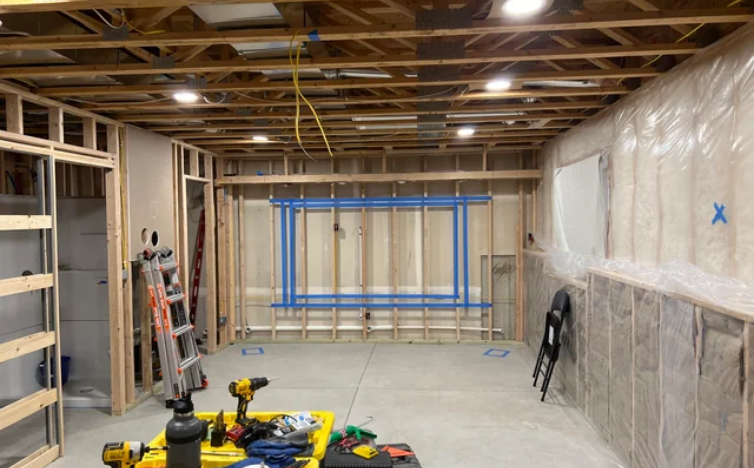Basements often serve as home theaters, gyms, or rental units, making soundproofing essential. Without proper treatment, noise from footsteps, appliances, and voices can travel upstairs or between rooms. Soundproofing basement walls reduces disturbances and enhances privacy.
Best Methods for Soundproofing Basement Walls
 1. Add Mass with Drywall
1. Add Mass with Drywall
- Install resilient channels to decouple drywall from studs.
- Use double-layer drywall with Green Glue (a damping compound) for extra noise reduction.
2. Insulate with Sound-Absorbing Materials
- Fill wall cavities with rock wool or fiberglass insulation to block airborne noise.
- Consider acoustic foam panels for additional absorption.
3. Seal Gaps and Cracks
- Apply acoustic caulk around edges, outlets, and pipes to prevent sound leaks.
- Use weatherstripping on doors for better sound isolation.
4. Install Soundproofing Panels or Mats
- Mass-loaded vinyl (MLV) adds density without taking up much space.
- Acoustic fabric panels improve sound absorption while enhancing aesthetics.
5. Use Decoupling Techniques
- Staggered stud walls or sound isolation clips minimize vibration transfer.
- Floating floors with rubber underlayment reduce impact noise.
Common Mistakes to Avoid
- Ignoring flanking noise (sound traveling through ceilings or ducts).
- Using regular insulation instead of soundproofing-specific materials.
- Skipping proper sealing, which undermines other efforts.
Contact Muhammad Shaheen Carpentry at 971 55 219 6236, and discover the transformative science of soundproofing for your space.
Final Thoughts
Soundproofing basement walls requires a combination of mass, absorption, and decoupling techniques. Whether for a home theater, office, or rental space, these methods ensure a quieter, more comfortable environment.


Add Comment